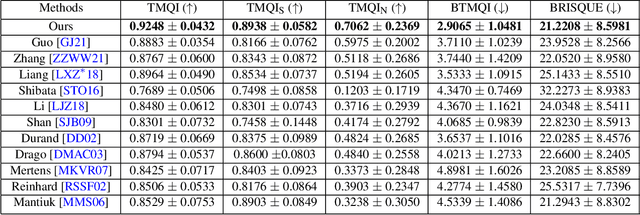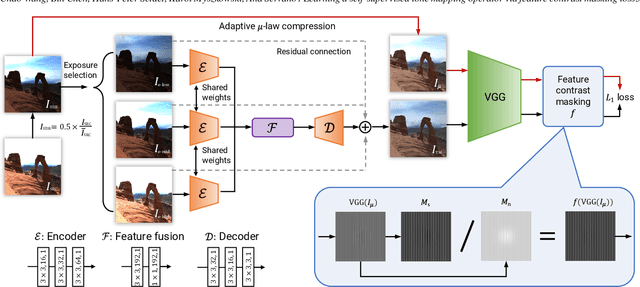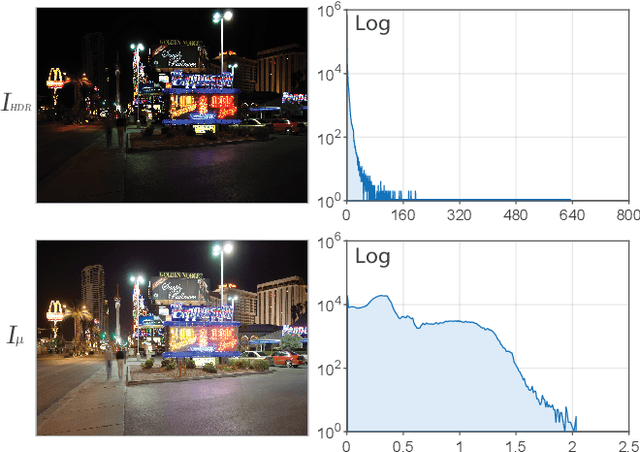Learning a self-supervised tone mapping operator via feature contrast masking loss
Paper and Code
Oct 19, 2021



High Dynamic Range (HDR) content is becoming ubiquitous due to the rapid development of capture technologies. Nevertheless, the dynamic range of common display devices is still limited, therefore tone mapping (TM) remains a key challenge for image visualization. Recent work has demonstrated that neural networks can achieve remarkable performance in this task when compared to traditional methods, however, the quality of the results of these learning-based methods is limited by the training data. Most existing works use as training set a curated selection of best-performing results from existing traditional tone mapping operators (often guided by a quality metric), therefore, the quality of newly generated results is fundamentally limited by the performance of such operators. This quality might be even further limited by the pool of HDR content that is used for training. In this work we propose a learning-based self-supervised tone mapping operator that is trained at test time specifically for each HDR image and does not need any data labeling. The key novelty of our approach is a carefully designed loss function built upon fundamental knowledge on contrast perception that allows for directly comparing the content in the HDR and tone mapped images. We achieve this goal by reformulating classic VGG feature maps into feature contrast maps that normalize local feature differences by their average magnitude in a local neighborhood, allowing our loss to account for contrast masking effects. We perform extensive ablation studies and exploration of parameters and demonstrate that our solution outperforms existing approaches with a single set of fixed parameters, as confirmed by both objective and subjective metrics.
 Add to Chrome
Add to Chrome Add to Firefox
Add to Firefox Add to Edge
Add to Edge